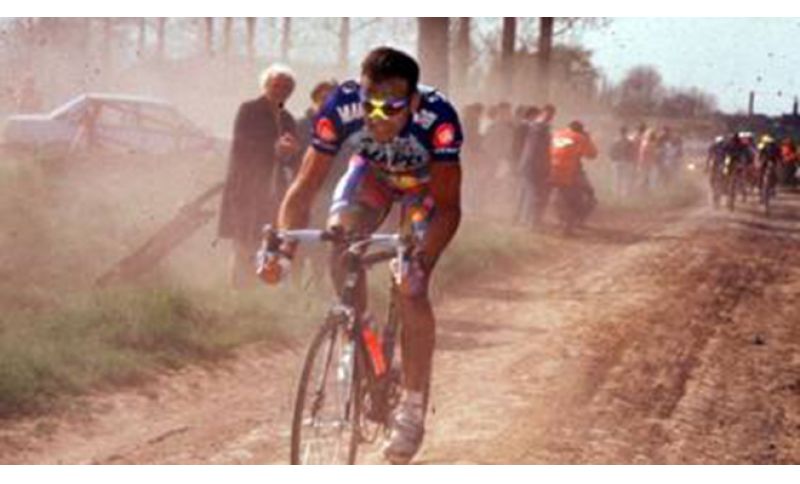

Today, the 122nd edition of Paris-Roubaix, the Queen of Classics, is being raced, with that dust burning the riders' lungs and that fire consuming their legs. Roubaix is a race that has inspired generations of cyclists and made them dream, with that Hell, so terrible and yet so fascinating.
Many Italians have won this incredible race, with Maurice Garin, the Italian later naturalized French who was first in 1897 and then in 1898, then Jules Rossi in 1937, leading to the two-year period of Serse and Fausto Coppi in 1949 and 1950. An Italian victory also came the following year with Antonio Bevilacqua.
Then Felice Gimondi in 1966 and Francesco Moser's supremacy between 1978 and 1980, with his three consecutive victories. But it's after that our heart and memory pause. We arrive at 1995 and our eyes stop on that Tuscan boy, born in Florence on December 11, 1964, smiling and silent, with a good-guy face, even though in the race he was someone who could instill fear. We're talking about Franco Ballerini and that photo from thirty years ago that takes us back to his first Paris-Roubaix victory.
The roads and that cobblestone, the terror of every rider, tell us about those feats that Franco, from his photo album, has turned into a poetry written with images, sweet, strong, and melancholic, that 30 years ago he wanted to give us. It was April 10, 1995, and Franco Ballerini was about to race his seventh Paris-Roubaix and until then his best result had been second place in 1993 and third the following year. It was the 93rd Roubaix and counted as the third test of the Road Cycling World Cup and many illustrious names were at the start who could win.
However, this was going to be a special year, with a special winner, and only after 6 hours, 27 minutes, and 8 seconds the André-Petrieux velodrome opened its doors to the Tuscan who, in Mapei jersey, crossed the finish line alone. Behind him, Andrei Tchmil won the sprint for second place after one minute and fifty-six seconds. With him were also Museeuw, Ekimov, and Capiot competing for the best positions. That April 9, 1995, remains for everyone the Roubaix of Franco Ballerini, who for many more years would give soul and legs to that race, which he loved until the day of his retirement.
On April 10, 1995, the Tuscan won with a Colnago bike with a carbon frame that would make history in modern cycling. Franco Ballerini won again three years later, in 1998, creating another masterpiece, winning by over 4 minutes ahead of Andrea Tafi. The Hell of the North, if you're a cyclist, you can choose to love or hate it, and Franco Ballerini decided to entrust it with his heart and did so 13 times, which is how many times he participated in Roubaix. The last postcard, the most delicate and still moving today, is from 2001, his last race, the last performance of an extraordinary protagonist, who set out for his final race. On April 15, 2001, Franco finished thirty-second, with his face and body full of dust, he entered the French velodrome, moved his hands from the handlebars and opened his jersey. The incredulous audience applauded and stood up because under that jersey was Franco Ballerini's farewell to cycling and to the race he had loved so much. "MERCI ROUBAIX", two simple words that contained an important part of that two-wheeled world that was Franco Ballerini's life. That black writing on the white jersey was the final scene of a great story, written by a man who in his career had raced Paris-Roubaix 13 times, winning first place twice in 1995 and 1998 and reaching the podium in 1993 and 1994.
